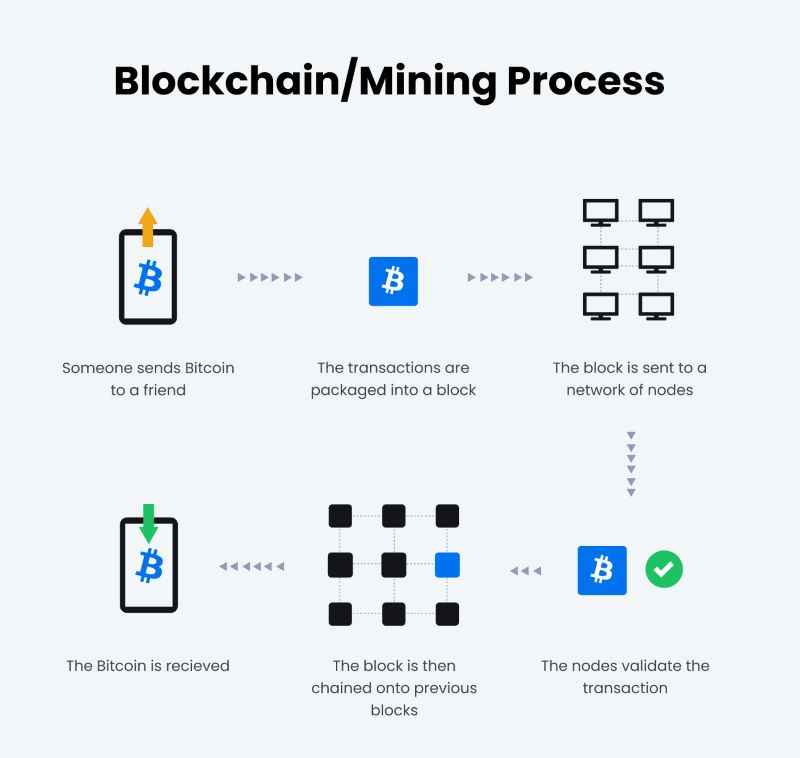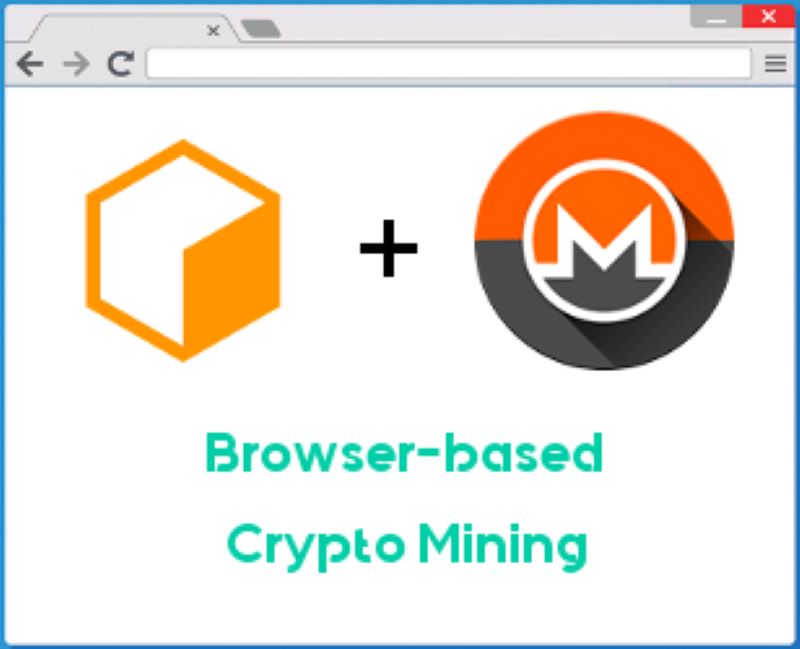Coinhive Uncovered: The Intriguing Tale of Crypto Mining Scripts
Dive in as we unravel the story behind Coinhive, a name that stirs curiosity and skepticism in the vast sea of online currency ventures. What is Coinhive? You might wonder. It’s a tool that flipped the script on digital earning, yet not without its set of controversies. Hang tight, as I take you on a tour from its inception to its complex role in today’s web monetization game. We’ll dissect its makeup, question its morals, and explore its aftermath. It’s a journey through intricate codes and heated debates, where every click could harbor unseen treasure or a hidden trap.
Decoding Coinhive: A Comprehensive Overview
What Is Coinhive?
Let’s talk about Coinhive – you might ask, “What is it?” Well, Coinhive was a service that allowed website owners to make money without showing you ads. It let them use a bit of your computer’s power to mine cryptocurrency while you browsed their site. This mining was for a currency called Monero (XMR). It’s like digging for virtual gold, but with your computer doing the hard work.
How Coinhive Reinvented Web Monetization
Before Coinhive, if web owners wanted to make money, they mostly used ads. Lots of ads everywhere, right? Coinhive changed the game. It said, “Let’s make money a new way.” Instead of ads, websites could have a Coinhive script – a bit of code. This script turned visitors’ computers into miners. While visitors read or watched content, their computers worked in the background. This made money for the site owner.
You might guess, this was super smart! Suddenly, websites could earn without annoying ads. But how did Coinhive work? Imagine a bunch of tiny virtual workers in your computer. They solve puzzles to find Monero coins. Each solved puzzle gave a little Monero to the site owner. That’s web-based mining for you!
Coinhive was cool because it made things quieter online. No pop-up ads or banners. Just reading or watching videos, and all the while, your computer chipped away at finding Monero. And many felt fine about that. “I don’t see ads, but the website gets cash? Good deal,” some said. Others were not so sure. We’ll talk about that too.
Using Coinhive meant you had to trust the website. They needed to ask, “Hey, can we use a bit of your computer to mine?” That’s consent in web mining. Some did this, and it was all good. Others didn’t ask – that’s where things got tricky. No one likes being used, especially without a heads-up.
So, why aren’t we seeing Coinhive everywhere now? It shut down. Why? Well, there were a few reasons. One biggie was that some folks used Coinhive to do bad stuff. They didn’t ask for permission and just took over computers to mine. That’s cryptojacking – like hijacking but with cryptocurrency mining.
The shutdown of Coinhive shook things up. Now, websites have to think of new ways to get money. Coinhive had its ups and downs. It brought a new approach but came with challenges. It’s like a tool – super helpful when used right, but you’ve got to be careful. Websites can still mine, but now they’re thinking more about asking you first. And that’s a good thing because trust matters.
Whether it offered a good or bad user experience is up for debate. It depended on how it was used. For honest, open use, it was pretty neat. For sneaky use, not so much. It made us look closer at security, privacy, and good internet manners. Coinhive’s tale is a mix of clever tech and tough lessons. Remember, web-based mining can work, but it has to be done the right way – with everyone on board.
Coinhive and Its Mechanisms of Action
Delving into Monero Mining with JavaScript
Let’s talk about Monero mining. What is it? It’s a way to make Monero, a type of digital money, using a computer. To do this, folks add new transactions to the Monero ledger, a big list that keeps track of all transactions. They solve hard math problems to add these new transactions. This is called “mining.”
Coinhive came in as a tool, a special code, to make mining simple on websites. It let visitors help with Monero mining while surfing that website. This JavaScript miner ran in visitors’ web browsers.
It was like turning web users into gold miners by digging through numbers, not dirt. But instead of a pickaxe, their web browser was the tool. Every time they found a piece of “digital gold,” that website earned a little bit of Monero.
Understanding the Browser-Based Mining Process
Mining through websites works like this: when someone visits a site, Coinhive’s script starts running. It uses part of the visitor’s computer power to try and solve those tricky math puzzles. As it solves them, the site earns Monero.
This way, websites could make money without showing ads. Sounds cool, right? Well, it could be, if the site asks you if you want to help mine and you say yes. This is about making choices and agreeing to share your computer’s power.
But if a site doesn’t ask and just starts mining, that’s a problem. It’s not fair to take something without asking, like using your phone to make calls. This sneaky mining is called “cryptojacking,” and it’s like someone secretly selling cookies from your cookie jar.
The trick is to balance making money for the site and not slowing down your computer. Coinhive could eat up a lot of your computer power, making other things run slow. That’s no fun if you’re trying to watch videos or play games online.
Coinhive got a lot of attention. Some folks liked how it gave websites a new way to make money. Others didn’t like it because it could be used the wrong way. In the end, Coinhive had to shut down, but the idea of browser mining doesn’t stop there.
Next time you’re hopping from site to site, think about all the work happening in the background. It could be serving up your favorite pictures of cats, or it might be digging for digital coins in the world of Monero mining.
The Ethical and Legal Landscape of Coinhive
Navigating Cryptojacking and User Consent
What is Coinhive? It’s a script that mined Monero (XMR), a digital coin. Understanding Coinhive starts with knowing it let websites mine crypto using visitor’s computers. But here’s the big question: Did users say it’s okay? Often, no—they weren’t asked. And that’s where the term “cryptojacking” kicks in. It’s when Coinhive scripts run without a head’s up. Sneaky, right?
Coinhive features made it easy for sites to make money. But sneaking it into users’ browsers? That’s a no-go. Using Coinhive without letting folks know became a hot issue. It’s not only about ethics—it’s about the law too. Putting Coinhive to work without consent could break privacy laws. Plus, it strains visitors’ CPUs, and that made people mad. Blogs called it stealing, and users were hunting for Coinhive detection tools, wanting no part in it. Ad blockers started to block Coinhive, keeping users safe and their computers speedy.
Coinhive’s Closure: Implications and Legal Considerations
And then boom, Coinhive shut down in 2019. Why? The legal heat got too much, and it wasn’t as profitable. The Coinhive script dropped off the radar, and websites had to look for other ways to earn money. The shutdown sent a clear message: If you’re embedding Coinhive or anything like it, you better ask for permission. It was a big deal that changed web-based mining for good.
After Coinhive closed, many asked, “Can you still mine Monero?” Yes, but not with Coinhive. Alternatives to Coinhive popped up, but they all had to deal with the same concerns. Coinhive’s tale taught us a lesson: If you’re mining through websites, you have to think about consent in web mining. And more than just thinking, you have to act—get that user okay first.
Okay, so Coinhive’s gone. But cryptocurrency mining didn’t just vanish. It’s alive, just more above-board. You’ve got new players, new rules, but the game’s the same: tap into that browser power, only now, you let the user in on the secret. The controversy around Coinhive helped make mining more ethical. It showed us the dos and don’ts. And it got laws talking about how to keep the web safe and fair.
The Coinhive shutdown sparked debates. It pushed for clearer rules on browser-based mining. The whole drama around this JavaScript miner had everyone learning a thing or two. It’s like a story where the ending’s just the start. Coinhive might be history, but its impact? That’s wrote all over the future of web-based mining.
Beyond Coinhive: Exploring Alternatives and Best Practices
Viable Mining Alternatives in a Post-Coinhive World
After Coinhive closed its doors, many webmasters wondered, what now? Don’t fret. Several alternatives have stepped up. They offer comparable services with a fresh approach.
For example, NiceHash and MinerGate allow users to mine cryptocurrencies similarly to Coinhive. They provide a JavaScript miner for Monero and other coins. Their setup is often simple, like Coinhive’s was. These platforms let you join mining pools, where many users work together. They also give you a dashboard to track your earnings. This sharing can mean more stable payouts. It’s like fishing with friends; a bigger net catches more fish.
AuthedMine was Coinhive’s attempt at a more ethical service. It required user consent before mining. Users had to agree before their CPU helped to mine Monero. It showed that customer trust is priceless. Though it’s no longer around, it offered a key lesson. Always ask before you borrow someone’s stuff.
Most alternatives to Coinhive will give you a script to add to your website. They often assure better terms for privacy and fairness. Many warn against illegal use, like cryptojacking. They know sneaking miners into someone’s browser is a big no-no.
Embedding Mining Scripts Responsibly: A Guide for Webmasters
Let’s talk responsibility. Dropping a Coinhive-like script on your site should be a careful choice. Here’s how you do it right.
First, you need clear consent. Tell your visitors what the mining script does. You could pop up a message that asks, “Is it alright if we use a bit of your CPU to mine Monero?” Make sure they can say yes or no. Think of it like asking a neighbor if you can borrow a tool. You wouldn’t just take it, right?
Second, keep the CPU use light. Don’t let the script use all of someone’s processing power. That could make their computer slow. We all hate when our favorite show starts to buffer.
Lastly, always prioritize your user’s experience. If your site becomes a drag to use, visitors will leave. Ensure your site runs smoothly, with or without the mining script. A smooth ride keeps everyone happy.
By choosing a reputable mining service and embedding scripts with care, you set the stage for success. Plus, you respect your visitor’s choice and gear. You can still generate revenue through web-based mining. Just remember to play fair and be upfront. It’s about earning—both coins and trust.
In this post, we took a deep dive into Coinhive and its unique approach to web monetization through browser-based mining. We started by explaining what Coinhive is and how it uses Monero mining in your web browser to make money. We then explored how Coinhive works, breaking down the JavaScript mining and the mining process itself.
We also discussed the tricky parts, like the ethics of cryptojacking and how to get user consent. We looked at why Coinhive had to close and the legal stuff around it. Finally, I shared some good alternatives to Coinhive and tips for webmasters on using mining scripts right.
Remember, the web keeps changing, and so must we. Using mining scripts can be okay if you’re straight with your users and follow the law. I hope you now feel more clued in about Coinhive and what web monetization may look like without it. Keep learning, stay informed, and always mine responsibly!
Q&A :
What exactly is Coinhive?
Coinhive was a cryptocurrency mining service that launched in 2017. It offered a JavaScript miner for the Monero Blockchain that you could embed in your website. Website owners could use this script to let visitors mine cryptocurrency with their computer’s processing power, potentially as an alternative to traditional advertising revenue.
How did Coinhive work for website owners and visitors?
For website owners, Coinhive provided a script to be inserted into their web pages, which would then run in visitors’ web browsers. This script utilized a portion of the processing power of visitors’ devices to mine Monero cryptocurrency. The idea was to offer website owners a new way to generate income, while visitors could contribute to the site’s revenue without viewing ads. However, consent from the site’s visitors was a key ethical and legal consideration for its use.
Was Coinhive considered malicious or illegal?
Coinhive itself was not inherently malicious or illegal; it was a tool that could be used legitimately to monetize content. However, it gained notoriety because it was often used without users’ consent, leading to what is known as cryptojacking. Unauthorized use of visitors’ computing resources to mine cryptocurrency is considered malicious and can lead to legal consequences. This negative association is a key reason why Coinhive ceased operations in March 2019.
Are there any legal alternatives to Coinhive for website monetization?
Yes, there are legal alternatives to Coinhive for website monetization. These include traditional advertising networks, affiliate marketing, subscription models, sponsored content, and donation-based systems. More recently, some services have emerged that offer transparent, opt-in cryptocurrency mining as an alternative revenue model, ensuring that user consent and legal compliance are prioritized.
What impact did Coinhive’s shutdown have on the cryptocurrency mining landscape?
The shutdown of Coinhive had a significant impact on cryptocurrency mining through web browsers. It removed one of the most popular means of browser-based mining, leading to a decrease in the prevalence of cryptojacking. However, it also sparked discussions about ethical web monetization and the need for transparency and user consent in using visitors’ devices for mining purposes. The result has been a move towards more consent-based cryptocurrency mining solutions and a heightened awareness on the part of users about how their computing resources may be used by websites they visit.



